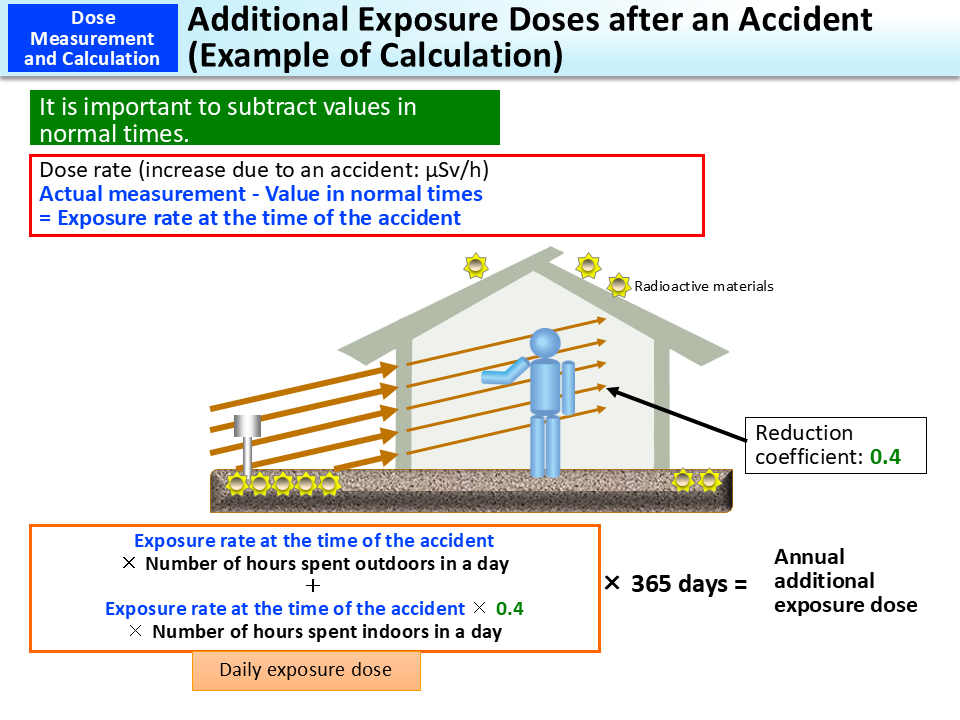Additional Exposure Doses after an Accident (Example of Calculation)
The ambient dose rate measured with a survey meter includes γ-rays from natural environment. To calculate the amount of radiation released due to the accident at Tokyo Electric Power Company (TEPCO)'s Fukushima Daiichi NPS alone, the values measured before the accident (background values) must be subtracted from the currently measured ambient dose rates to ascertain the increase caused by the accident. The values before the accident are available on the website, “Environmental Radioactivity and Radiation in Japan” (https://www.kankyo-hoshano.go.jp/data/database/, in Japanese).
The value obtained by multiplying the increased outdoor and indoor dose rates by the time spent indoors and outdoors is an approximate increase in exposure dose compared with normal times (additional exposure dose).
The calculation example for obtaining a daily additional exposure dose after the accident is made under the assumption that a person stays outdoors for eight hours and stays in a typical Japanese house with a reduction coefficient of 0.4 for 16 hours. Furthermore, an annual additional exposure dose is estimated by multiplying the daily additional exposure dose by 365, the number of days in a year.
The value of 0.23 μSv/h, which was adopted as the reference value in designating Intensive Contamination Survey Areas where mainly municipalities conduct decontamination after the accident, is derived from the annual additional exposure dose of 1 mSv (hourly exposure dose of 0.19 μSv, which becomes 1 mSv in annualized terms under the same assumption on the safe side as applied in the above calculation example, plus the exposure dose due to natural radiation of 0.04 μSv).
This calculation example is a simplified estimation method provided under the conservative assumption in the response to the accident at TEPCO’s Fukushima Daiichi NPS. Therefore, it is considered that the actual external exposure dose of an individual in real life may be lower than the calculation result.
- Included in this reference material on March 31, 2013
- Updated on March 31, 2022

